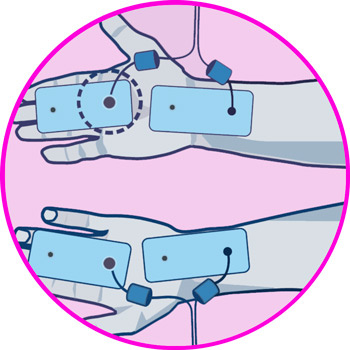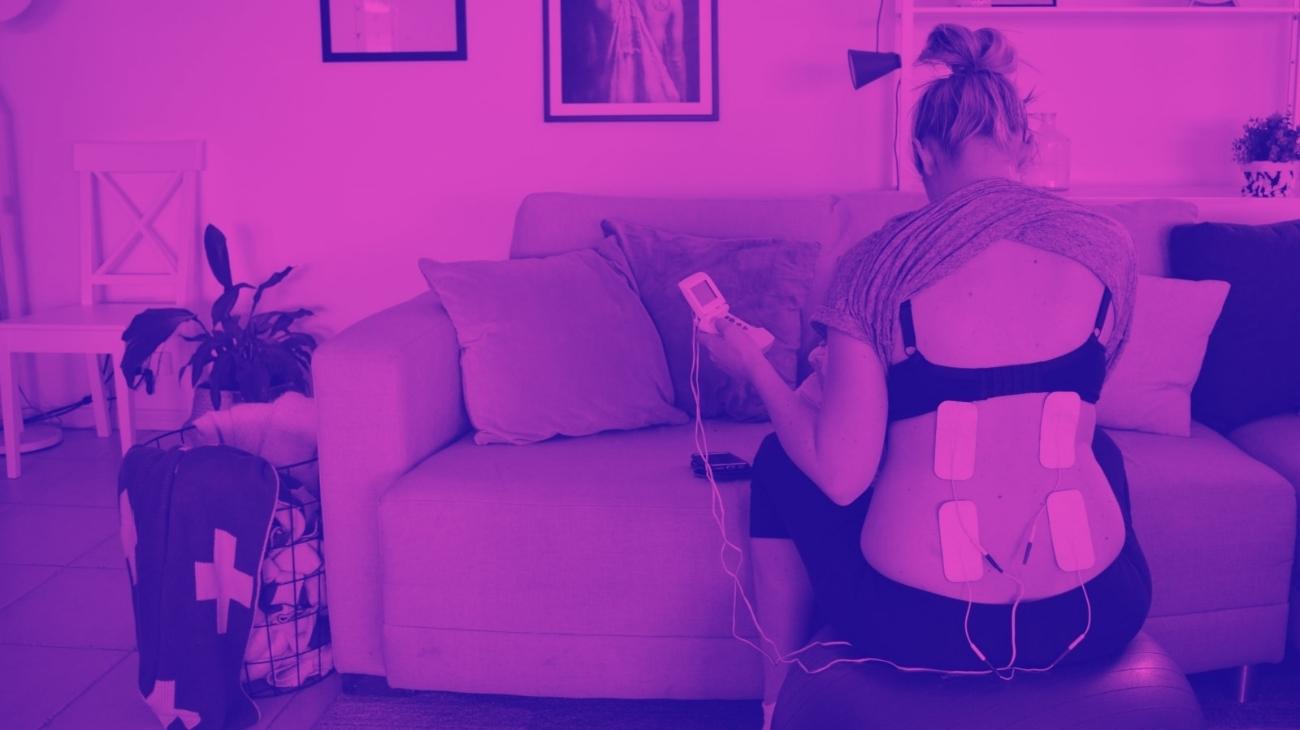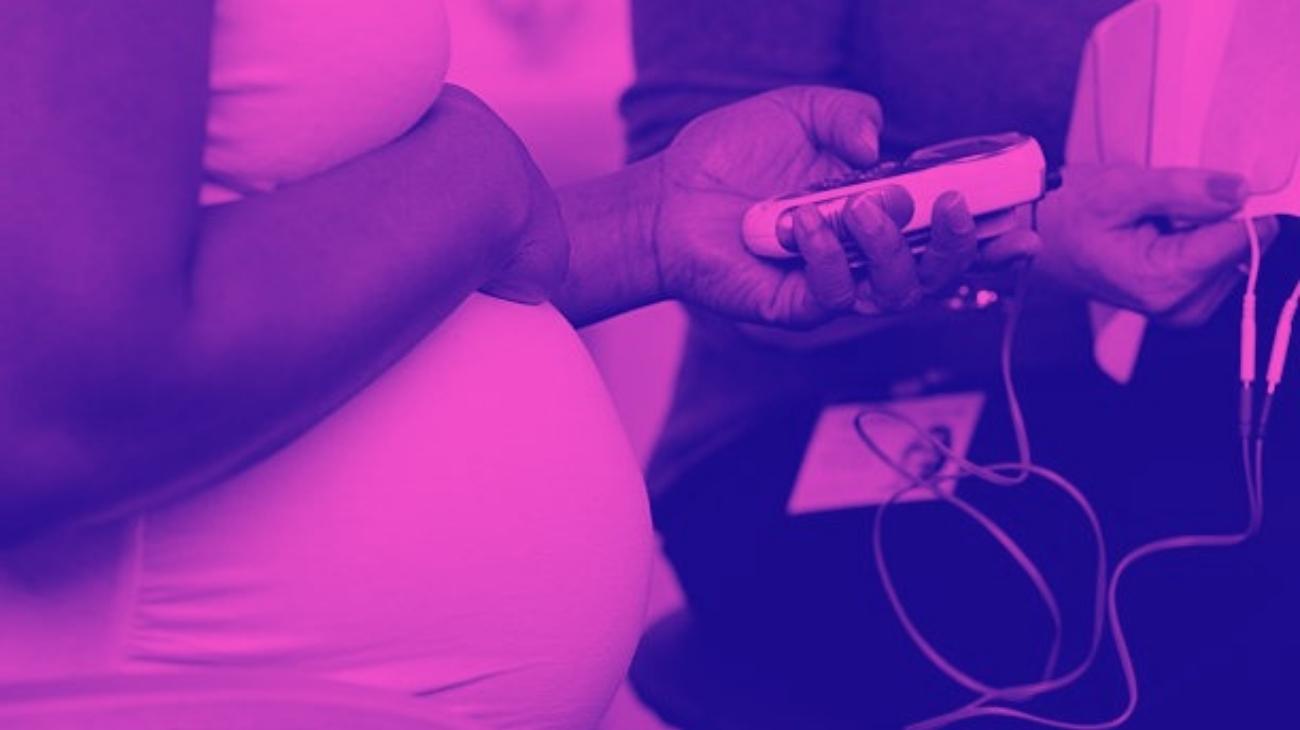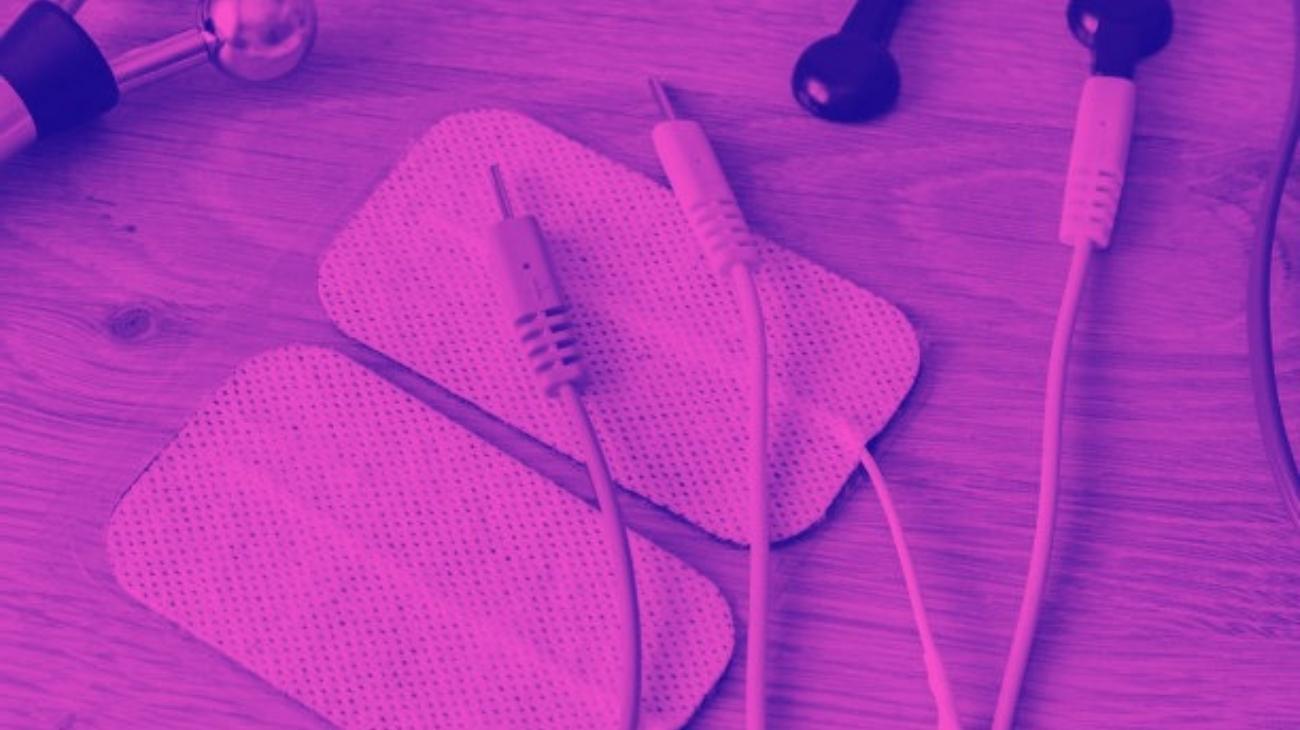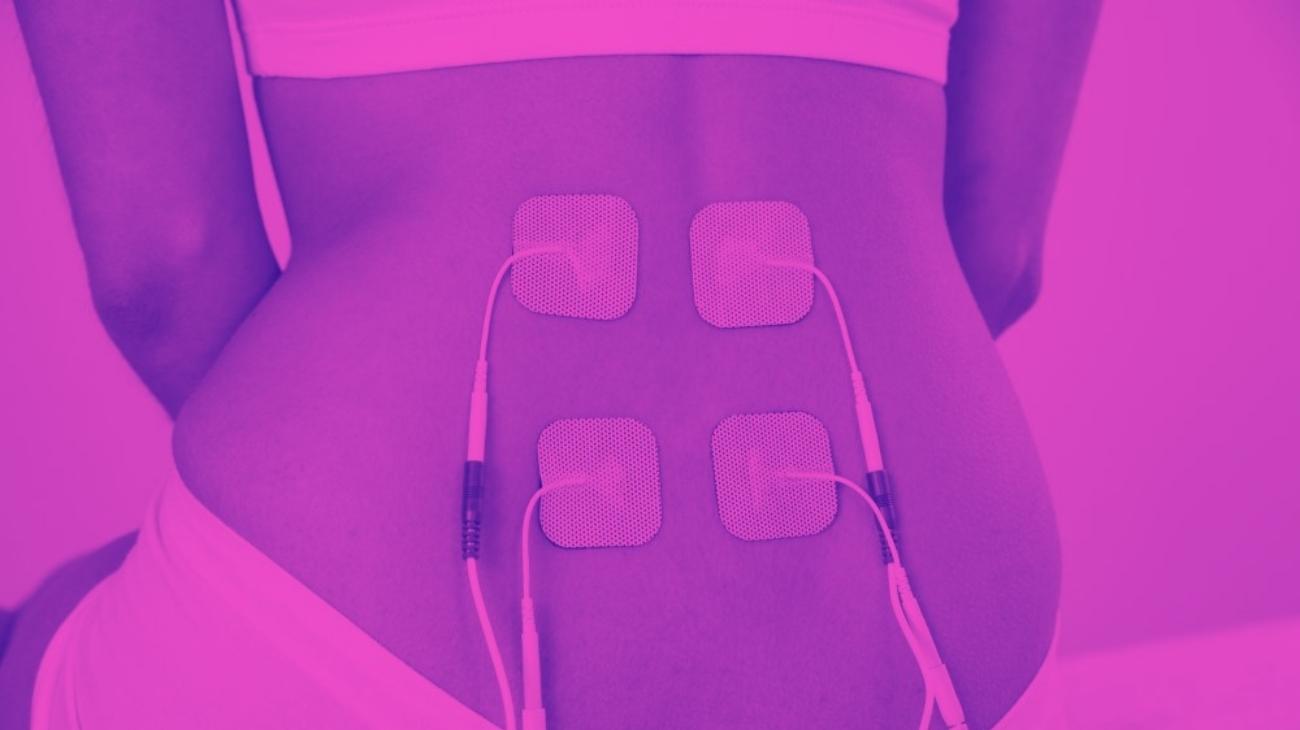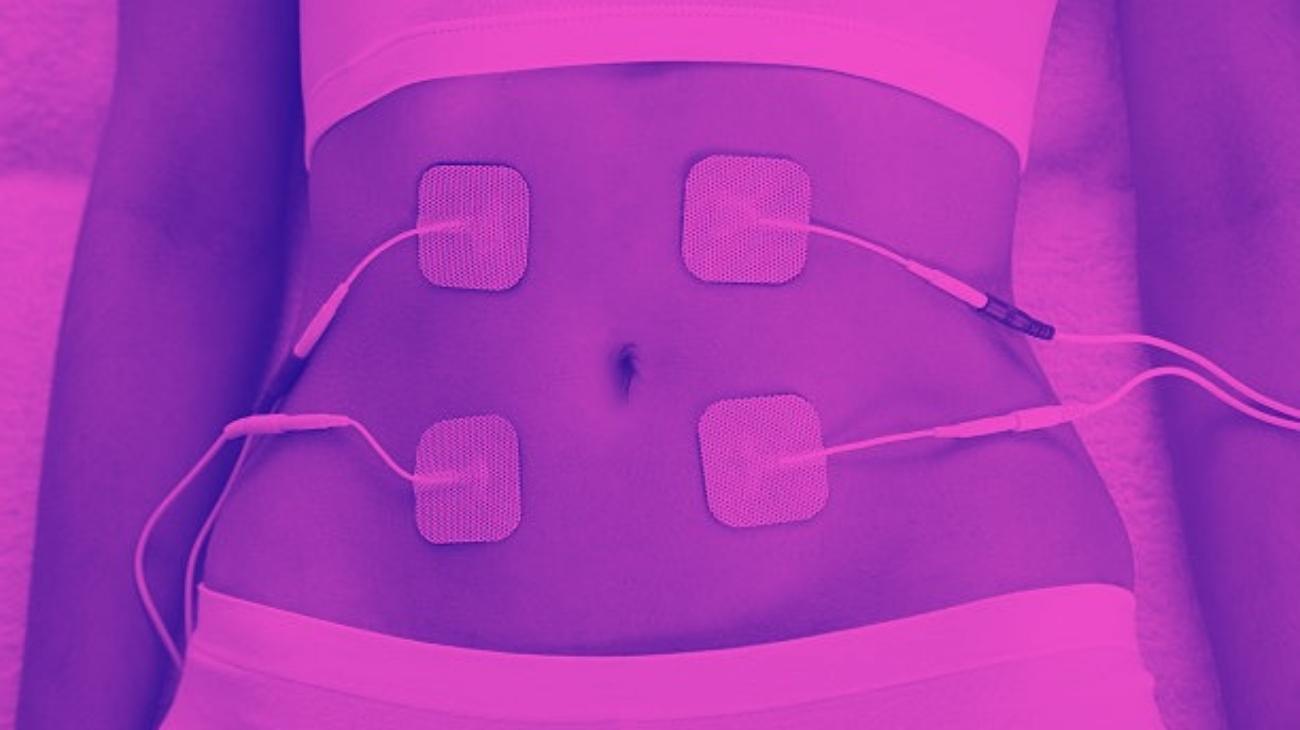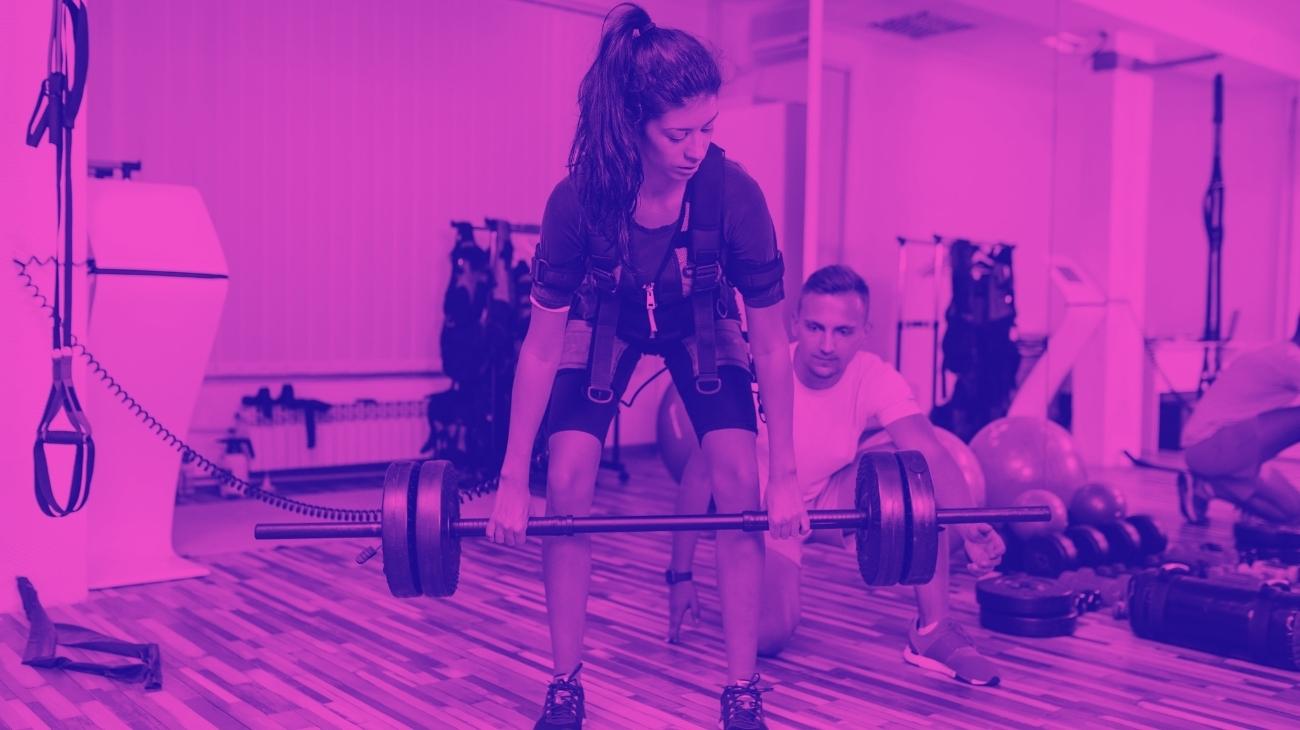- What are the benefits of using TENS for pain relief?
- Best TENS machines for pain relief
- What are the benefits of using EMS to prevent injuries?
- Best EMS electrostimulators for injury recovery
- Video: How to place electrodes pads to relieve pain during injuries?
- More types of EMS electrostimulators and TENS machines you should know
- Most common types of injuries that cause pain
- What is electrotherapy and how can it help relieve pain?
- Contraindications to the use of electrodes and electrotherapy
The human body is a precisely functioning system, with biomechanical systems designed to make the most of human physiology and obtain the greatest possible mobility. However, certain alterations in these biomechanical systems, which can be caused by injuries or diseases, can generate pain in different parts of the body, which have very different origins.
Due to this diversity, the treatments for each of these ailments vary according to their origin. However, a common point is the usefulness of TENS and EMS electrotherapy to mitigate the sensation of pain caused by most injuries and disorders when applied correctly. In the following paragraphs, we will teach you the most common types of injuries and their causes, and how to use TENS and EMS therapy to deal with the pain they produce.
What are the benefits of using TENS for pain relief?
The use of Transcutaneous Electrical Nerve Stimulation is one of the most useful ways to treat pain caused by most disorders, thanks to its direct effect on the nerves. However, this physiotherapy technique can offer a large number of additional benefits, among which we can highlight:
- Increases resistance to pain
- Reduces nerve activity responsible for pain sensation
- Muscle relaxation
- Increased spinal circulation
- Improved blood supply
Best TENS machines for pain relief
- Type: TENS
- Channels: Dual
- Modes/Programs: 20 Modes
- Intensity: 20 Levels
- Wireless: Yes
- Heat Therapy: No
- Battery: Rechargeable Lithium (up to 10 hours)
- Electrodes: 8 Pads
- Display: Digital
- Size: Not specified
- Accelerates recovery from sports injuries
- Improves blood circulation
- Rechargeable battery
- Portable and small size
- Includes user manual
- Does not specify measurements and weight
- Not suitable for muscle hypertrophy
- No heat therapy
It has an independent dual-channel control mode, which allows you to treat different parts of the body with different settings and intensities as required. You can select from 20 preset massage modes, each designed to relieve certain types of pain and produce an overall sense of relief.
Med-Fit - Dual channel TENS machine for fast, effective and accurate pain relief ideal for home use
- Type: TENS
- Channels: Dual
- Modes/Programs: 5 Modes
- Intensity: Not specified
- Wireless: Yes
- Heat Therapy: No
- Battery: Batteries
- Electrodes: 8 Pads
- Display: Digital
- Size: Not specified
- Reduces pain symptoms
- Improves joint mobility
- Improves blood circulation
- Accelerates recovery from sports injuries
- Includes user manual
- Does not specify intensity levels
- Does not specify which type of batteries to use
- Does not specify measurements and weight
Its transcutaneous electrical stimulation function offers an infallible form of acute and chronic pain relief through electrical impulses that block pain signals and promote the production of endorphins, making it ideal for treating the symptoms of arthritis, sciatica, muscle pain, joint pain and much more.
- Type: TENS
- Channels: 4
- Modes: 9 Programmes
- Intensity: Not specified
- Wireless: Yes
- Heat therapy: No
- Battery: Rechargeable
- Electrodes: 16 Pads
- Display: Digital
- Size: Not specified
- Wireless Device
- Includes 16 electrodes of 4 different sizes
- 4 independent channels
- Promotes tissue healing
- Reduces pain and improves blood circulation
- Few modes/programs
- No battery life specified
- Does not specify intensity and size
It uses a combination of TENS and EMS stimulation technologies, which are completely safe and natural methods to alleviate various types of ailments and improve physical condition by stimulating the growth of muscle fibers. It is the best option for long-term management of chronic pain, allowing you to lead a completely normal life and perform all your daily activities.
- Type: TENS
- Channels: Dual
- Modes/Programs: 3 Modes
- Intensity: Not specified
- Wireless: Yes
- Heat Therapy: No
- Battery: 2 AA Batteries
- Electrodes: 16 Pads
- Display: No display
- Size: Not specified
- Includes user manual
- Reduces pain symptoms
- Improves joint mobility
- Improves blood circulation
- Accelerates recovery from sports injuries
- No intensity levels specified
- Does not specify measurements and weight
- Display not included
Its electrostimulation method allows you to relieve chronic ailments through the application of mild electrical stimuli that inhibit pain signals and stimulate the production of endorphins. The best results are obtained when using this unit for 60 to 90 minutes. The use of this device is widely recommended because it does not interfere with any medical treatment and is completely safe.
- Type: Combo
- Channels: Dual
- Modes/Programs: 50 Programs
- Intensity: Not specified
- Wireless: Yes
- Heat Therapy: No
- Battery: Not specified
- Electrodes: 4 Pads
- Display: Digital
- Size: Not specified
- Reduces pain symptoms
- Improves joint mobility
- Accelerates recovery from sports injuries
- Portable and small size
- TENS+EMS Combo
- Does not specify the type of battery to be used
- Does not specify intensity levels
- Does not specify measurements and weight
It has 50 preset programs, 44 modes of which are divided between TENS, EMS and therapeutic electrotherapy, 6 are fully customizable to offer a wide and varied treatment. It has a session timer function that you can program between 5 and 100 minutes, and an automatic shut-off function for optimal energy saving.
What are the benefits of using EMS to prevent injuries?
In most cases, Electro Muscle Stimulation Therapy does not offer benefits when it comes to eliminating the sensation of pain, but it is possible to use it in order to prevent most ailments thanks to the strengthening of the muscular system.
In addition to this, we can list the following benefits:
- Increased muscle activity
- Increased endurance
- Reduced risk of injury
- Increased muscle elasticity
- Increased muscle mass and strength
- Promotes the elimination of toxins
Best EMS electrostimulators for injury recovery
- Type: EMS
- Channels: 4
- Modes/Programs: Not specified
- Intensity: Not specified
- Wireless: No
- Heat Therapy: No
- Battery: Rechargeable
- Electrodes: 4 electrodes
- Display: Digital
- Size: 22 x 32 x 20 cm; 249gr
- Prevents muscle atrophy
- Improves joint mobility
- Improves blood circulation
- Portable and small size
- Includes user manual
- Not for pain relief
- No specified modes or programmes
- No intensity levels specified
The Compex Sport 4.0 has 10 conditioning programs, 5 recovery massage programs, 8 pain management programs, 2 rehabilitation programs and 5 fitness programs. All these features make it the perfect electrostimulator for athletes who practice their sport 3 to 4 times a week, for injury prevention and fast recovery from injuries.
- Type: Combo
- Channels: Dual
- Modes/Programs: 53 Programs
- Intensity: Not specified
- Wireless: Yes
- Heat Therapy: No
- Battery: Rechargeable Lithium
- Electrodes: 4 Pads
- Display: Digital
- Size: Not specified
- Improves joint mobility
- Includes carrying bag
- Rechargeable battery
- Includes user manual
- TENS+EMS combo
- Battery life not specified
- No size and weight specified
- Intensity levels not specified
It includes 53 massage programs in total, which are designed to treat a wide variety of ailments. Additionally, some of these programs have modifiable parameters that allow you to create the perfect customized programs for your own needs.
- Type: Combo
- Channels: Dual
- Modes/Programs: 55 Programs
- Intensity: Not specified
- Wireless: Yes
- Heat Therapy: No
- Battery: Rechargeable Lithium
- Electrodes: 4 Pads
- Display: Digital
- Size: 80 gr
- Portable and small size
- TENS+EMS combo
- Rechargeable battery
- Includes user manual
- Includes carrying bag
- No measurements specified
- Battery life not specified
- No intensity levels specified
It contains 28 preset programs and 8 manual programs that you can configure to suit your needs. This feature gives you fantastic coverage for natural pain relief of all kinds, and it has a powerful memory function that saves the last massage program that was used, so you can access it immediately.
- Type: Combo
- Channels: -
- Modes/Programs: 15 Programmes
- Intensity: Not specified
- Wireless: Yes
- Heat Therapy: No
- Battery: Rechargeable Lithium
- Electrodes: 4 Pads
- Display: No display
- Size: Not specified
- TENS+EMS combo
- Control from mobile app
- Reduces pain symptoms
- Includes user manual
- Rechargeable battery
- No battery life specified
- No intensity levels specified
- Does not specify dimensions and weight
It has over 400 customised modes of use divided between EMS and TENS muscle stimulation, functions dedicated to the relief of all types of ailments and physical conditioning. The box includes 2 pre-charged pods, 2 sets of electrodes, 2 connection cables, 2 USB chargers, along with a carrying case ready to charge everything wherever you go.
- Type: Combo (TENS+EMS)
- Channels: 4
- Modes: 24 Programmes
- Intensity: Not specified
- Wireless: No
- Heat Therapy: No
- Battery: Rechargeable
- Electrodes: 20 Pads
- Display: Digital
- Size: Not specified
- Includes carrying case
- Portable Device
- Features 20 pads
- Includes charger and USB cable
- Stand-alone control mode
- Battery life not stated
- No size and weight specified
- No intensity specified
Adjustment between TENS and EMS modes can be done manually, giving you full control to set the modes of use you require according to your specific needs. It is also powered by a long-life rechargeable lithium battery, which is also supplied with a compatible charger. The battery can withstand up to 1,000 charges.
Video: How to place electrodes pads to relieve pain during injuries?
Electrodes for foot
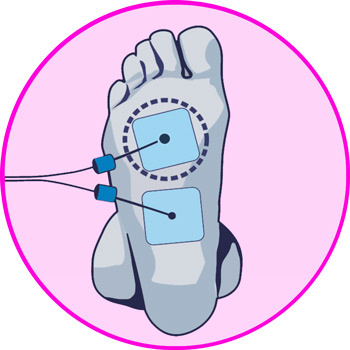
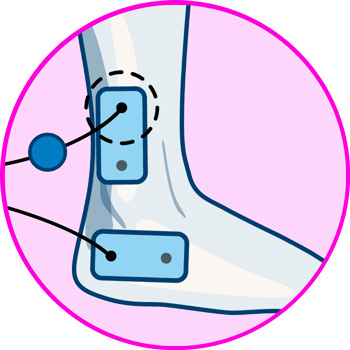
Electrodes for hands
Electrodes for Core
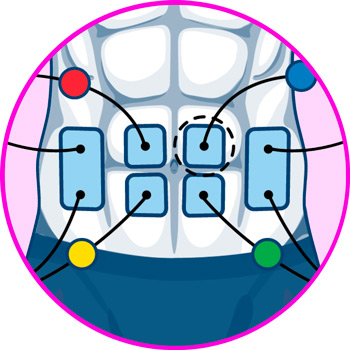
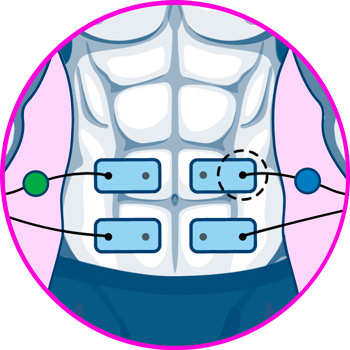
Electrodes for back
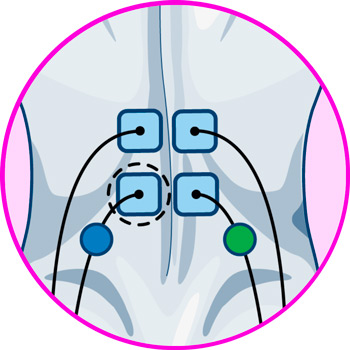
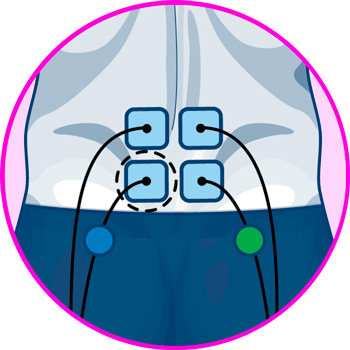
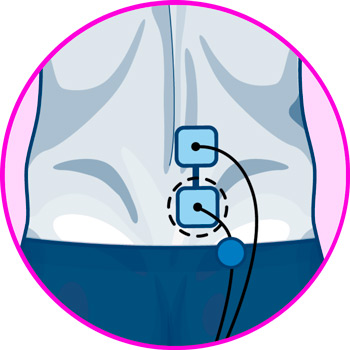
Electrodes for arms
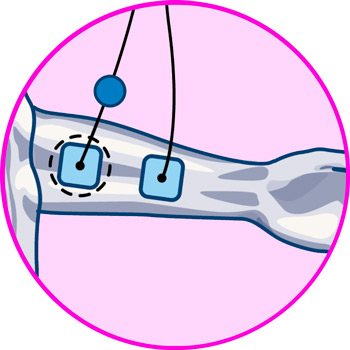

Electrodes for neck
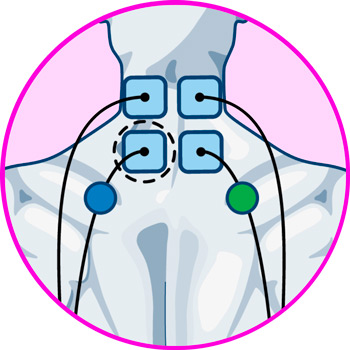

More types of EMS electrostimulators and TENS machines you should know
Most common types of injuries that cause pain
Due to the multiple systems that enable motor function in the human body, injuries, diseases and disorders that can cause ailments can have a variety of origins. These origins vary depending on the type of injury and these injuries can be divided into four major groups.
Muscle injuries
Muscles serve the function of mobilizing and stabilizing the body, as well as providing the strength to perform daily tasks of any kind. Muscles are subject to varying degrees of tension most of the time, so depending on the type of activity performed, they are prone to different types of injuries.
Among the most common we can highlight the following:
- Cramps: is an involuntary contraction of a muscle that causes pain, stiffness and a quite noticeable bulge. It is a very common condition in athletes and happens mostly due to lack of hydration.
- Stiffness: it is a muscle injury of late onset that consists of the breakage of muscle microfibers that occur due to muscle overload. Its most common symptoms are pain and inflammation of the muscle.
- Tears: caused by excessive stretching or contraction of muscle tissue, which causes a strain or tear in a muscle or tendon. One of the most common causes is muscle overload when trying to lift heavy objects.
- Muscle contractures: is a continuous and involuntary contraction of the muscle, generating a sensation of pain due to the constant tension to which it is subjected. It is characterized by a reduction in range of motion, sensation of pain and post-injury stiffness and weakness.
- Strains: occur when a muscle is subjected to excessive stretching that causes a tearing of fibers. It is a particularly painful injury and its most common causes are improper use of a muscle and muscle overload.
- Contusion: it is a crushing of muscle fibers produced in a specific area, commonly due to a blunt impact. This painful injury may cause inability to move, bruising and swelling.
Joint injuries
Joints are the areas of the body designed to provide the maximum range of motion possible, in addition to being the main areas of shock absorption and stress when performing any activity, whether routine or competitive demand. It is for this reason that joints are very vulnerable to overload injuries or other types of disorders.
Among the most common are the following:
- Arthritis: is the swelling and tenderness of the joints caused by the deterioration of the cartilage that cushions the friction between the bones that form them. It is a fairly common condition and produces pain, inflammation, stiffness and reduced range of joint mobility.
- Bursitis: this disorder occurs when the synovial bursae, responsible for providing cushioning between the bones, become inflamed, causing pain, stiffness and swelling in the joint
- Dislocation: these are injuries that occur when one of the ends of a bone is pulled out of place. It can result from falls or blows, and is very common in contact sports.
- Sprains: is an excessive stretching of the fibrous tissue that connects the bones, producing inflammation, pain, bruising and even tears, depending on the severity of the injury.
- Osteoarthritis: is a rheumatic disorder that erodes joint cartilage, causing stiffness, motor limitation, pain and inflammation in the joints. It differs from arthritis in that the main symptom is inflammation, while that of osteoarthritis is wear and tear.
- Gout: is a form of arthritis that, in most cases, affects the big toe joint and is caused by the formation of urate crystals in the joints due to excess uric acid in the blood.
Bone injuries
The bony apparatus of the body is responsible for functioning as a framework, maintaining the structure and morphology of the body. It supports the weight of the other systems of the body, and has very vulnerable points to certain types of injuries. Among the most common are:
- Dislocations: it occurs when one of the ends of a bone separates from the cavity in which it is embedded, making movement impossible and generating a marked sensation of pain.
- Fractures: fractures occur when a section of bone breaks. Generally it occurs by direct impacts in the socket and its severity can vary from a fissure to an exposed fracture, in which the bone protrudes from the skin.
- Sprain: a severe sprain can lead to a dislocation and even a fracture of the bones.
Neuropathies
Neuropathies are caused by damage to the peripheral nervous system, derived from accidents or diseases. Within these lesions we can find a classification of neuropathies that is governed by the different nerve branches affected.
These classifications are as follows:
- Sensory peripheral neuropathy: translates as damage to sensory nerve branches in the affected areas, accompanied by a sensation of pain.
- Motor peripheral neuropathy: the nerve damage is more focused on the motor branches of the nerves, reducing the ability to move the affected limb.
- Autonomic peripheral neuropathy: occurs when the affected nerves are responsible for the control of involuntary functions. It can cause blood pressure problems, temperature imbalance, digestion and bladder control problems.
- Peripheral mononeuropathy: unlike neuropathy, which affects several nerve branches, mononeuropathy is damage to a single nerve.
What is electrotherapy and how can it help relieve pain?
Electrotherapy has established itself as a very feasible method for the treatment of pain caused by injuries and illnesses, as well as a way to prevent them. However, this physical therapy modality is divided into two types that have unique characteristics and are applied for different purposes. These types are Transcutaneous Electrical Nerve Stimulation (TENS) and Electrical Muscle Stimulation (EMS).
Below, you'll see the difference between each, the characteristics that distinguish them from each other, and how their application helps in both pain relief and prevention of pain-causing injuries.
TENS
TENS stands for Transcutaneous Electrical Nerve Stimulation, and is defined as a physical therapy technique based on the use of low-frequency electrical impulses for the treatment of pain caused by various types of trauma, disorders or diseases.
TENS is characterized by the following properties:
- The intensity of its electric current ranges from 1 to 250 Hz.
- It interacts directly with the nerve endings of the affected areas to mitigate the sensation of pain.
- Its impulses counteract the electrical impulses of the nerves that travel to the brain, preventing the pain from registering.
- It is not a method to cure the source of the pain, but to mitigate the pain itself.
Its best feature, and the one that makes it an excellent option for the treatment of ailments of different types, is the ability of its electrical discharges to affect at a nervous level the pain receptors, so that, once the therapy is applied for a certain time and at the appropriate intensity for the type of injury, the patient is left with a feeling of relief that can last for several minutes after the session is over.
EMS
EMS is the name given to Electrical Muscle Stimulation. This modality of electrotherapy works as an alternative method of training and physical conditioning, which uses medium to high intensity electrical impulses to interact directly with the muscle tissue to improve its resistance, strength and elasticity.
The main characteristics that define EMS therapy are:
- It applies high intensity electric shocks ranging from 70 to 150 Hz.
- It does not interact with nerve tissue directly.
- It generates contractions in the muscles or muscle groups worked, activating them and promoting the generation of new muscle fibers.
- It is amethod widely applied in physiotherapy, especially in advanced stages of rehabilitation of muscle injuries.
The use of this electrotherapy modality is very favorable for muscle reconditioning after injuries, but it can also be applied to injury prevention. By using EMS therapy on various muscle groups on a regular basis, they gain strength, increased tensile strength and provide greater support for the joints, greatly reducing the likelihood of various types of injuries.











